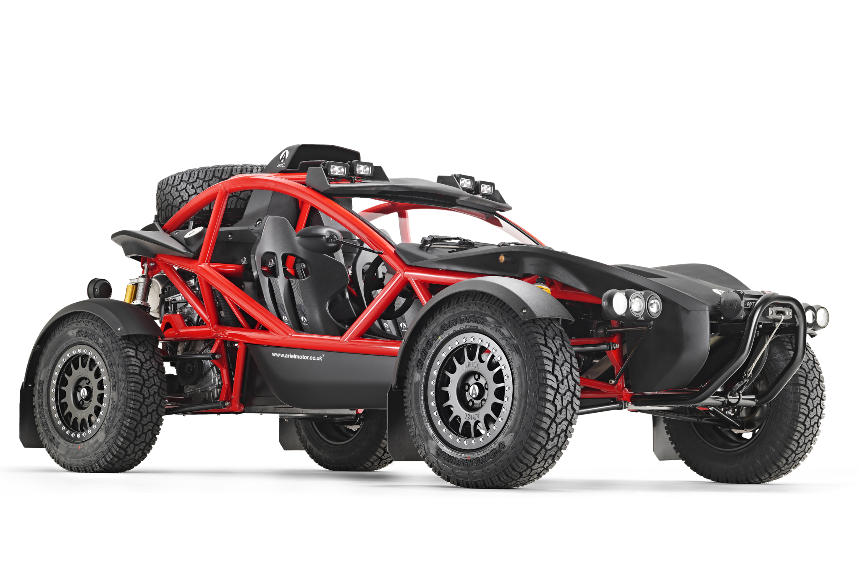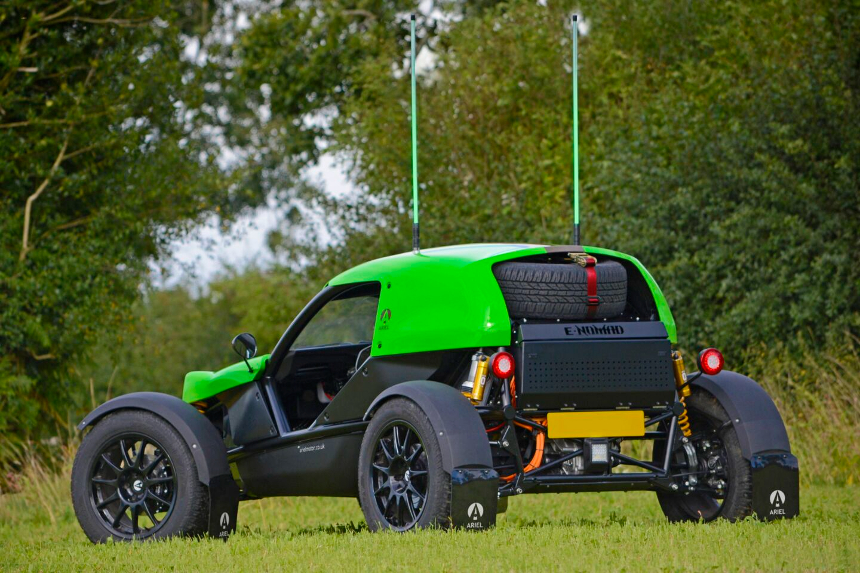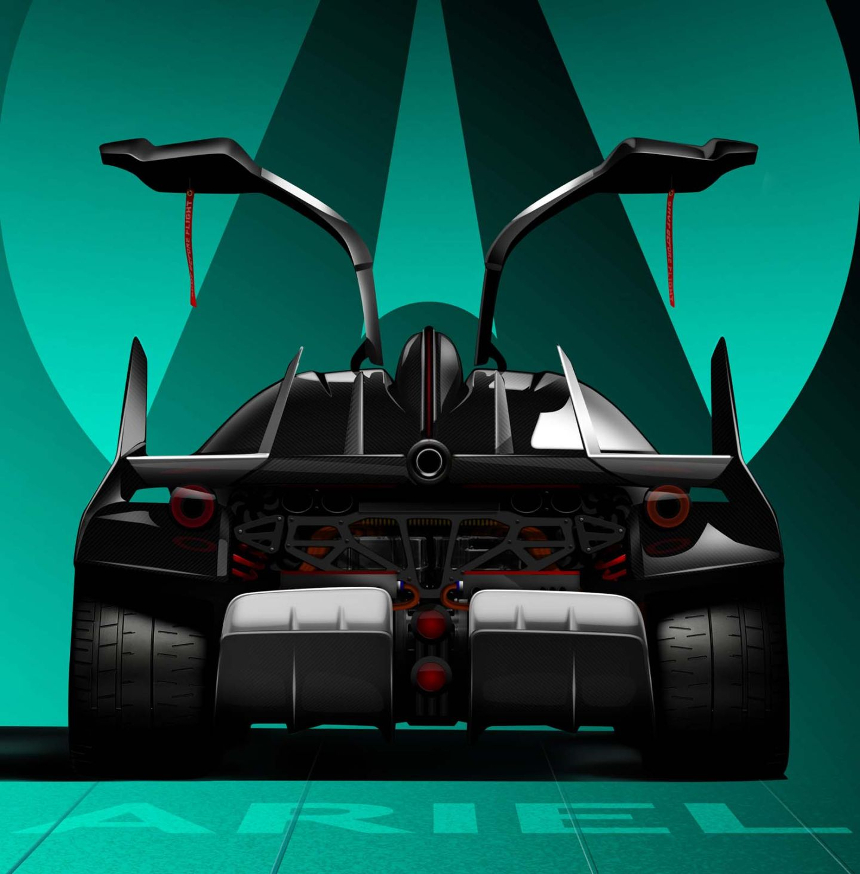Sign up for daily news updates from CleanTechnica on email. Or follow us on Google News!
What is a sports car? It is a vehicle optimized for speed. To purists, anything that does not make a car go faster is omitted, which is why early sports cars did not have heaters or radios or crank-up windows. In fact, many had no windows at all, and even such basics as windshield wipers were optional.
The Ariel Motor Company in the UK traces its history back to the days before automobiles when the “penny farthing” — the two-wheeled device that featured a very large wheel in front and a very small wheel in back, which resembled a large penny in front of a much smaller farthing — was popular. That people would actually ride such contraptions goes to show how far we humans will go to avoid walking and get to where we are going faster. Maybe the name Ariel is a tribute to the peripatetic spirit in Shakespeare’s Midsummer Night’s Dream that could go anywhere and everywhere at will?

A few years ago, Ariel stood the automotive world on its head when it unveiled the Ariel Atom, a tube-frame vehicle that fully embraced the original definition of what makes a car a sports car. Four wheels, an engine, transmission, and brakes. No windshield wipers needed for this beauty!

It followed the Atom a few years later with the Nomad, which emphasized off-road capability. This one is practically a luxury car because it has wipers, although they are probably intended primarily for scraping away mud thrown up while bashing about in the hinterlands far from any paved roads.

Behold The Ariel E-Nomad!
Now the company has unveiled the Ariel E-Nomad, an outrageous off-road beast for those who prefer electric motors instead of infernal combustion engines. Although it is just a concept for now, the company told ArsTechnica it will definitely use customer interest to gauge whether to build a production version. “While the E-Nomad is a concept, it does show production intent for the vehicle and hints at just a small part of Ariel’s future. Once it has been through our usual grueling testing regime, we could opt to add E-Nomad alongside its ICE Nomad 2 sibling, so we’ll take great interest in customer feedback on the concept car,” said Ariel director Simon Saunders.

Ariel says the E-Nomad can match the performance of the gasoline-powered Nomad, which means customers can expect 0–60 mph (98 km/h) in 3.4 seconds despite wearing knobby all terrain tires. But rapidly accelerating electric vehicles aren’t anything special. What does stand out is the E-Nomad’s relative lack of mass. It tips the scales at just 1,975 lb (896 kg), less than half as much as most of the EVs on sale today. We can think of one regular CleanTechnica reader who will be delighted to hear that someone may be building a lightweight EV.
The E-Nomad has a 41 kWh battery pack that is mounted behind the cabin, replacing the internal combustion engine and fuel tank found in the gasoline-powered car. Ariel sourced the powertrain from Rockfort Engineering and says the pouch cells in the battery pack offer “best-in-class energy density.” In total, the battery pack weighs less than 660 lb (300 kg) and can send up to 281 hp (210 kW) to the drive unit at the rear. The drive has a peak torque output of 361 lb-ft (490 Nm) and it weighs just 202 lb (92 kg).
Aerodynamic efficiency is probably the most important factor affecting EV range, and the E-Nomad is a little more optimized than the normal Nomad, with more covered bodywork and fewer open gaps between the bars of the space-frame chassis. This aerodynamic smoothing results in a 30% reduction in drag. Nevertheless, it is far from being the most svelte of vehicles, which means its quoted range is a rather modest 150 miles (240 km). Still, the E-Nomad is unlikely to be used for long distance touring, so there is some question as to how relevant extended range will be to prospective purchasers. 150 miles of strafing sand dunes and catching air of the whoop-de-doos is not quite the same as 150 miles on the superslab. What the purpose of the twin stalks on the roof might be we cannot imagine.
Since a goal for the E-Nomad project was to explore more sustainable methods of low volume car manufacturing — swapping the brand’s philosophy of “serious fun” for “seriously clean fun” — Ariel has used a flax-based composite material from Bamd Composites with a much lower carbon footprint than regular carbon fiber. Often, substituting a natural composite comes with a weight penalty due to lower stiffness, but Ariel says that the resulting panels are 9% lighter than they would be with a conventional composite.
Ariel also cut the carbon footprint of the tooling for the panels in half, saving more than 11,000 lb (5,000 kg) of carbon emissions in the process. Both bodywork and tooling are also recyclable. There are some new features for the driver, too. Ariel has developed a new antilock braking system with selectable on- and off-road modes, and since this is an EV, there’s also a one-pedal driving mode and even an eco mode, which reduces power and torque in favor of more range.
Meanwhile, Ariel is continuing to develop the “Hipercar” concept vehicle it started working on in 2017. The prototype is a battery-electric coupe with 1,180 hp (880 kW). Ariel says work is continuing on the prototype, with a production version possibly appearing next year. Once again, input from the public will figure prominently into any decision about whether to put that car into production. Any resemblance to the Batmobile is probably intentional.

The Takeaway
The cars from Ariel are more whimsical than practical. And yet, whimsy can often be the precursor to innovation. For instance, developing a process for making carbon fiber body parts that are recyclable and significantly reduce carbon emissions from the manufacturing process is an idea that could easily find its way into mass market cars and help reduce auto industry emissions. There are lots of other products that could use low carbon composites as well.
No matter how you slice it, the cars from Ariel keep the original spirit of the sports car — minimum weight, adequate power, extraordinary handling, no frills — alive and well in a world where gigantamobiles proliferate by the hour. Ariel is keeping the ethos of Colin Chapman — the master of simple machines that were wicked fast — alive. “Horsepower can make you faster on the straights,” he said. “Lightness will make you faster everywhere.”
You many never see a car from Ariel. It is a very small, specialized automaker, but its innovative engineering could well find its way into a car you drive in the near future. May there always be a place for inventors with imagination in a world that has grown ever more homogenized.
Have a tip for CleanTechnica? Want to advertise? Want to suggest a guest for our CleanTech Talk podcast? Contact us here.
Latest CleanTechnica.TV Videos
CleanTechnica uses affiliate links. See our policy here.
CleanTechnica’s Comment Policy




